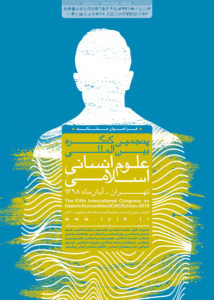مسئولیت حقوقی دولت و رویکرد دین در پزشکی بازساختی
محمدجواد جاوید
استاد دانشگاه تهران، ایران، تهران
JJAVID@UT.AC.IR
چکیده
در پزشکی بازساختی معاصر، نمیتوان بین نقش دین و دولت در یک جامعه مذهبی تفکیک قائل شد؛ بهویژه آنگاه که قوانین برگرفته از منبع دینی باشند و دولت نقش اجرای آنها را برعهده داشته باشد. با این مفروض که هر دولتی متأثر از ایدئولوژی سیاسی یا متعهد به قانون مذهبی ناچار باید در خصوص پزشکی بازساختی اعلان موضع و قبول مسئولیت کند، فرضیه نوشتار حاضر آن است که رویکرد دین و مسئولیت دولت دارای نسبت ایجابی و تکاملی در این خصوص هستند؛ به این معنا که مقاله اثبات کرده است که بدون رویکردی اثباتی نسبت به تحقیقات پزشکی نوین تدوین قانون و ترسیم رویکرد مبتنی بر دین یا عرف مذهبی در یک جامعه ناممکن خواهد بود. حکومت اسلامی مبتنی بر رویکرد دینی در این زمینه، دارای تعهد مضاعف است؛ زیرا علاوه بر اخلاق، شریعت نیز ضمن استقبال از پزشکی بازساختی به عنوان یک حکم اولیه، از لزوم پایبندی به تعهدات ثانونی همسو با حقوق پایه انسانی سخن میگوید.
کلید واژگان: پزشکی بازساختی، مهندسی بافت، حقوق، اخلاق، اسلام، دولت.
منابع
- خلفی، مسلم (۱۳۸۵). اهدای جنین در پرتو فقه و حقوق، مطالعات راهبردی زنان. ۳۳: ۲۲-۳۴٫
- راسخ، محمد و دیگران (۱۳۸۹). سلول بنیادی، اخلاق و حقوق. تهران: انتشارات پژوهشگاه ابنسینا.
- رنجبریان، امیرحسین، و سیف، زهرا (۱۳۸۸). چالشهای حقوق بشری شبیهسازی انسان، فصلنامه حقوق. ۳۹(۱): ۱۲۹-۱۵۶٫
- زمانی، سیدقاسم (۱۳۸۵) شبیهسازی درمانی و حق بر سلامتی در قلمرو حقوق بینالملل بشر، مجله پژوهش حقوق و سیاست. ۱۹: ۲۵-۴۱
- جاوید، محمدجواد، و طباطبائی، فهیمه سادات (۱۳۹۳). ملاحظات اخلاقی و حقوقی در مهندسی بافت. تهران: مخاطب.
- محمدی باردهای، احمد (۱۳۸۹). اهدای جنین در حقوق ایران: پیدا یا پنهان، مجله حقوقی دادگستری. ۷۲: ۳۵-۵۶٫
- Akrami, Seyed Mohammad, and Zahra Osati )2007(.Is Consanguineous Marriage Religiously Encouraged? Islamic and Iranian considerations, Journal of Biosocial Science. 39 (2):313-316.
- Atkins, Daniel )2003(. Revolutionizing Science and Engineering Through Cyberinfrastructure: Report of the National Science Foundation Blue-ribbon Advisory Panel on Cyberinfrastructure.
- Berthiaume, François et al )2011(.Tissue engineering and regenerative medicine: history, progress, and challenges, Annual review of chemical and biomolecular engineering. 2: 403-430.
- Black, J (1997) Thinking twice-about “tissue engineering”. IEEE Eng Med Biol Mag 16(4):102–۱۰۴٫
- Fadel, Mohammad )2000(. Islam and the new Genetics, Thomas L. Rev. 13: 901.
- Javid, Mohammad Javad, and Tabatabaei, Fahime )2014(. Ethical and Legal Issues in Tissue Engineering with an Emphasis on State Responsibility: Nashre Mokhatab.
- Jenkins, D. Denison et al. )2003). Tissue Engineering and Regenerative Medicine, Clinics in plastic surgery. 30 (4):581-588.
- Larijani, B, and F Zahedi (2004). Islamic Perspective on Human Cloning and Stem Cell Research. Paper read at Transplantation Proceedings.
- Mano, J. F. et al. (2007). Natural Origin Biodegradable Systems in Tissue Engineering and Regenerative Medicine: Present Status and Some Moving Trends, Journal of the Royal Society Interface. 4 (17):999-1030.
- Miremadi, Tahereh et al. (2012). Stem Cell Research and Therapy in the Islamic Republic of Iran: Pioneering in the Islamic World, Stem cells and development. 22 (1): 51-57.
- Pattinson, Shaun D. (2006). Medical law & ethics. Vol. 30. London: Sweet & Maxwell.
- Post, Stephen Garrard (2004). Encyclopedia of Bioethics. Set: Gale.
- Rahman, Rozlin Abdul et al. (2014). Bioethical Issues of Tissue Engineering and Regenerative Medicine: A Preliminary Review from Islamic Perspective, Revelation and Science 4 (2).
- Villey, Michel (1955). L’idée de Croisade, dans. Storia del Medioevo, G. C. Sansoni- Editore Firenze, volume III., 259

